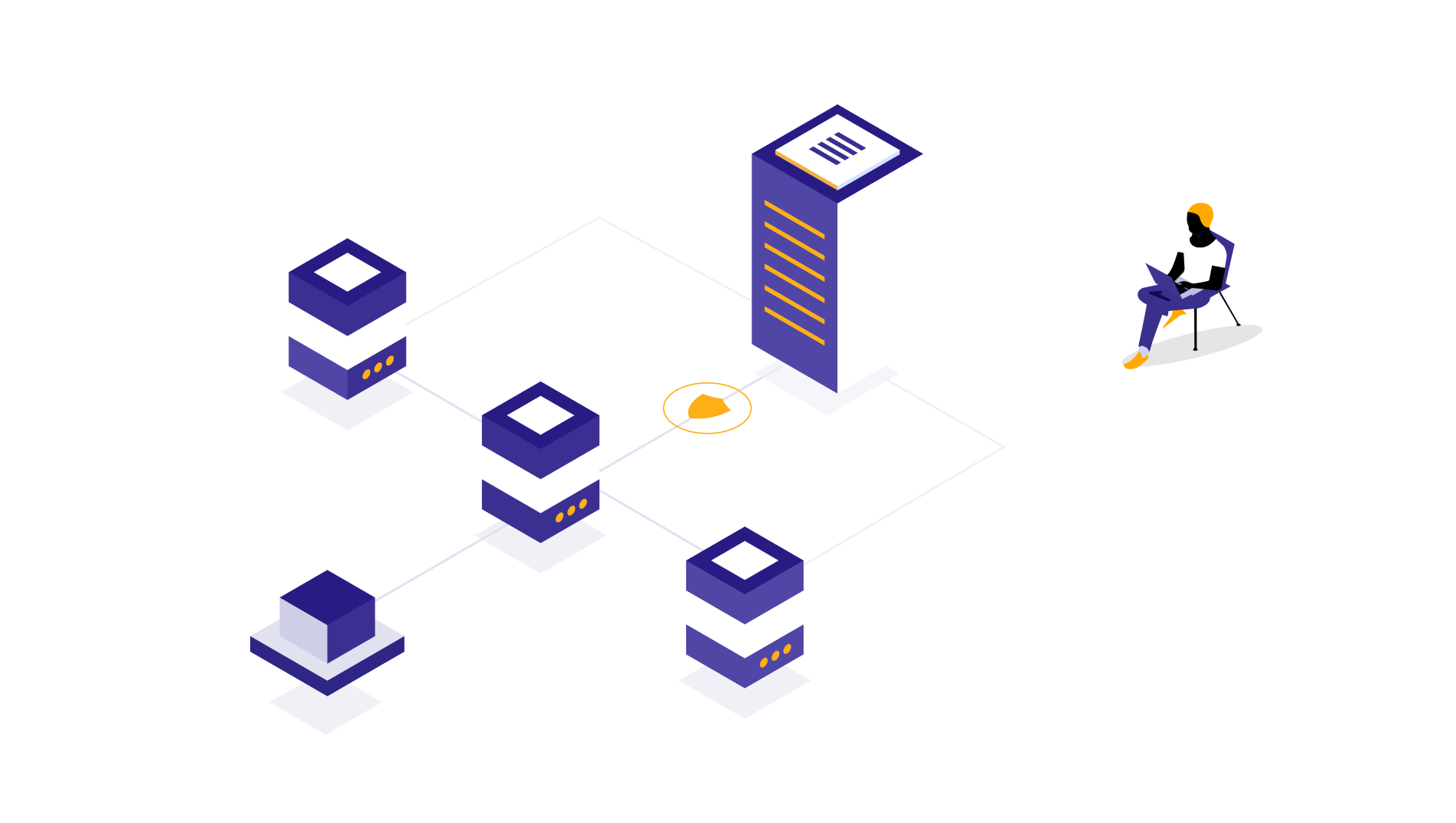ELT vs ETL: Understand the key differences and use cases
The blog discusses the differences between ETL and ELT processes and how do they work. Read to know how to select the suitable workflow for different use cases.

Subu
April 17, 2024 |
6 mins

ETL vs ELT: How do they differ?
Both ETL and ELT are data integration processes. Their full form is Extract - Transform - Load and Extract - Load - Transform respectively.
Out of both, ETL has existed longer than ELT and it helps organizations connect data from different sources and use them for analytics, reporting, or other purposes. The main difference between both is how the order of data transformation and loading changes in the middle.
The following table discusses ETL vs ELT in detail, based on a few important factors and IT considerations.
Factors | ETL | ELT |
|---|---|---|
Data warehouse support | ETL offers support for both on-premise and cloud-based data warehouses. It unites data from different sources and stores them in data warehouses in a structured format. | ELT allows data integration into cloud-based data warehouses. The data can be both structured and unstructured here. |
Costs | ETL is more expensive than the ELT process, particularly if they are built with an on-premise setup. However, there are modern cloud solution providers offering scalable pay-as-you-use pricing models. | ELT is much more economical. It’s faster to set up, meaning less development costs. Besides, transformation happens post-loading, so fewer resources are required to build an ELT pipeline. |
Compliance | Since transformation happens before storing the data in the target source, compliance measures can be implemented - like masking or encrypting sensitive data. So, it’s much more suitable for industries that are bound by strict regulations like HIPAA, GDPR, etc. | ELT can be less compliant in nature as it loads data as it is, which might include sensitive information like customer details, banking information, etc. |
Data lake / Data Lakehouse support | ETL is not appropriate to ingest and store data into a data lake or data lakehouse. | ELT can help in storing data into a data lake, or a data lakehouse. |
Hardware | ETL processes with on-premise setup require hardware support for storage and computation. Modern ETL processes are cloud-based too, so they don’t require hardware equipment. | Since it’s entirely cloud-based, ELT do not require hardware setup. |
Maintenance required | ETL requires a certain level of maintenance. Extract or transformation logic and code should be changed when there are changes in your incoming data. | ELT requires proper maintenance but for totally different reasons. If you keep collecting data, sooner or later the data lake can become messy without serving real purpose. Frequent checks and cleanups must be done and proper documentation should be maintained. |
Extract | Can extract data from legacy systems, and SaaS platforms like CRM, ERP, spreadsheets, databases, etc. | Can extract data from all cloud-based platforms and systems with real-time streaming data. |
Transformation | Extracted data is transformed in the staging area. | Transformation happens in the target system after data is loaded there. |
Load | Transformed data is loaded into the target data warehouse. | Collected data is loaded into the target data lake or lakehouse without being transformed. |
What is ETL?
The acronym stands for extract, transform, and load, which explains data movement from one or multiple data sources to the target system, a data warehouse through ETL data pipelines.
Data from these sources is moved to a staging area for transformation. This transformation includes processes like data cleansing, formatting, mapping, de-duplication, filtering, sorting, ordering, etc—every process it takes to make this data fulfill the requirements of end-users.
This transformed, structured data is transferred to the data warehouse which feeds business intelligence systems.
Since ETL has been here since the 1970s, it’s a well-matured and documented process. This shows how it has been a background for many successful data architectures for years. From heavy hardware setup and legacy systems, ETL has evolved to support cloud-based applications, facilitating more quicker movement of data and less hand-coding requirements.
Some top ETL tools for big data handling are Hevodata, Airbyte, Talend, Azure data factory, IBM data stage, and FiveTran.
ETL and reverse ETL are connected terms, yet have different purposes to serve. Reverse ETL is mainly about pushing the extracted and transformed data back into operational systems for utilization.
Recommended read: What is ETL process?
What is ELT?
ELT is much newer compared to ETL and is more suitable if you want to store both structured and unstructured data together. Here’s how it works. Data is collected from systems like files, emails, web pages, SQL or NoSQL servers, data collected from IoT devices, and other cloud-based enterprise systems. They are directly moved to the target destination - a data lake or lakehouse without any standardization or transformation. Some of the best ETL tools for small businesses are Stitch, AWS Glue, Talend, Fivetran, etc.
The target system here holds a collection of all kinds of data which can serve multiple purposes. So transformation happens only on a collective set of data from here which is required to solve an analytical problem or a use case.
While ETL is designed to serve one particular use case and transforms data only for that, ELT can power multiple use cases due to the vast data it collects.
Look at this use case for example.
Through the ELT pipeline, you collect data from different sources of your business and load them into a data lake.
From here, you can customize and build different pipelines depending on your use cases. Connect a data warehouse to extract required data for business analytics. Divide this data and feed data marts so you can view analytics for different functional areas.
Or collect data from the data lake required to power your data science use case. It’s up to your business requirements.
Since it doesn’t require any transformation, the process is much faster, and real-time data is available in the data lake as soon as it enters the source system.
Unlike its counterpart, ELT isn’t matured and is still evolving but at much faster rates and with higher number of successful implementations.
ETL vs ELT: Which is better for your business?
Both ETL and ELT are advantageous in their ways. It depends on the business and the specific requirements it has.
Let’s say a business has very specific analytics requirements. They use on-premise and a few cloud systems and handle moderate amounts of data. For analytics purposes, they want to store their data in a relational data warehouse. For this case, ETL is the best option as it transforms data into the suitable format mandated by relational databases.
ETL can be the go-to whenever a business uses on-premise systems, and requires a more streamlined data transformation process along with strong security and compliance adherence.
It also works if you have a proper IT team and infrastructure in place that can run batch processing, collect data, and share with respective stakeholders whenever they need it with the help of unified data platforms like Microsoft Fabric.
On the other hand, ELT can work for small and medium-sized businesses that are looking for a cost-effective, no-hardware solution.
ELT is much more scalable than ETL, hence these businesses shouldn’t have to worry about diversified data requirements of the future. They can keep collecting data, testing, and using it as required rather than transforming it before understanding its purpose.
Another advantage of ELT is its real-time processing abilities. This opens doors for a wide number of data analytics and AI possibilities. Faster insights will help your business make better, on-time decisions, empowering you to be data-driven.
Both ETL and ELT have very specific applications. You should choose the most optimal pipeline for your business depending on your data strategy, your current data architecture, and your future needs.
Still unsure whether ELT fits your data strategy better? We can help evaluate your pipelines, workloads, and cloud setup—and guide you with modern ELT solutions.

by Subu
With over two decades of experience, Subu, aka Subramanian, is a senior solution architect who has built data warehousing solutions, led cloud migration projects, and designed scalable single sources of truth (SSOTs) for global enterprises. He brings a wealth of knowledge rooted in years of hands-on expertise while constantly updating himself on the latest technologies. Beyond architecture, he leads and mentors a large team of data engineers, ensuring every solution is both future-ready and reliable.



